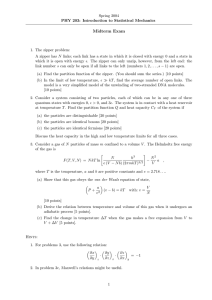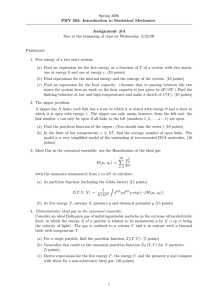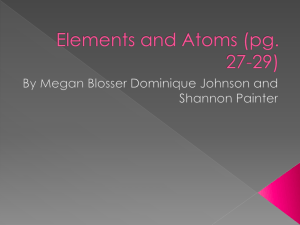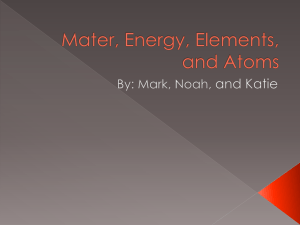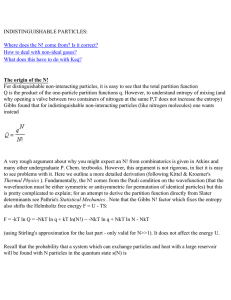Final Exam
advertisement
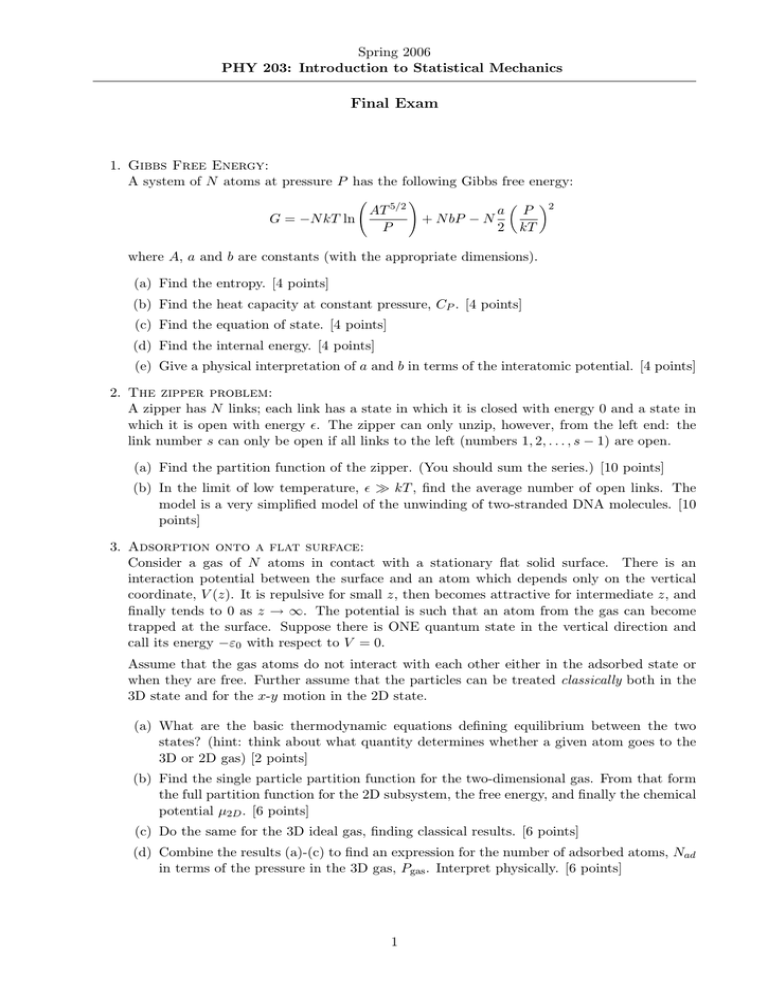
Spring 2006 PHY 203: Introduction to Statistical Mechanics Final Exam 1. Gibbs Free Energy: A system of N atoms at pressure P has the following Gibbs free energy: AT 5/2 G = −N kT ln P ! a + N bP − N 2 P kT 2 where A, a and b are constants (with the appropriate dimensions). (a) Find the entropy. [4 points] (b) Find the heat capacity at constant pressure, CP . [4 points] (c) Find the equation of state. [4 points] (d) Find the internal energy. [4 points] (e) Give a physical interpretation of a and b in terms of the interatomic potential. [4 points] 2. The zipper problem: A zipper has N links; each link has a state in which it is closed with energy 0 and a state in which it is open with energy . The zipper can only unzip, however, from the left end: the link number s can only be open if all links to the left (numbers 1, 2, . . . , s − 1) are open. (a) Find the partition function of the zipper. (You should sum the series.) [10 points] (b) In the limit of low temperature, kT , find the average number of open links. The model is a very simplified model of the unwinding of two-stranded DNA molecules. [10 points] 3. Adsorption onto a flat surface: Consider a gas of N atoms in contact with a stationary flat solid surface. There is an interaction potential between the surface and an atom which depends only on the vertical coordinate, V (z). It is repulsive for small z, then becomes attractive for intermediate z, and finally tends to 0 as z → ∞. The potential is such that an atom from the gas can become trapped at the surface. Suppose there is ONE quantum state in the vertical direction and call its energy −ε0 with respect to V = 0. Assume that the gas atoms do not interact with each other either in the adsorbed state or when they are free. Further assume that the particles can be treated classically both in the 3D state and for the x-y motion in the 2D state. (a) What are the basic thermodynamic equations defining equilibrium between the two states? (hint: think about what quantity determines whether a given atom goes to the 3D or 2D gas) [2 points] (b) Find the single particle partition function for the two-dimensional gas. From that form the full partition function for the 2D subsystem, the free energy, and finally the chemical potential µ2D . [6 points] (c) Do the same for the 3D ideal gas, finding classical results. [6 points] (d) Combine the results (a)-(c) to find an expression for the number of adsorbed atoms, Nad in terms of the pressure in the 3D gas, Pgas . Interpret physically. [6 points] 1 4. Quantum system of two particles: Consider a system consisting of two particles, each of which can be in any one of three quantum states with energies 0, (with > 0), and 3. The system is in contact with a heat reservoir at temperature T . Find the partition function Z and heat capacity CV of the system if (a) the particles are distinguishable [6 points] (b) the particles are identical bosons [7 points] (c) the particles are identical fermions [7 points] Discuss the heat capacity in the high and low temperature limits for all three cases. 5. Molecules with an electric dipole moment: [20 points] Consider a gaseous system of N non-interacting, diatomic molecules, each having an electric dipole moment µ, placed in an external field of strength E. The energy of a molecule will be given by the kinetic energy of rotation as well as of translation plus the potential energy of orientation in the applied field: p2 ε = + 2m ( p2φ p2θ + 2I 2I sin2 θ ) − µE cos θ , where I is the moment of inertia of the molecule. Find the internal energy U , the equation of state p(V ), the polarization P ≡ N hµ cos θi and the dielectric constant defined by ≡ 1+4πχ with P = χE, where χ is called the electric polarizability or susceptibility. Derive expressions of χ and as functions of the dipole moment and temperature. 2

